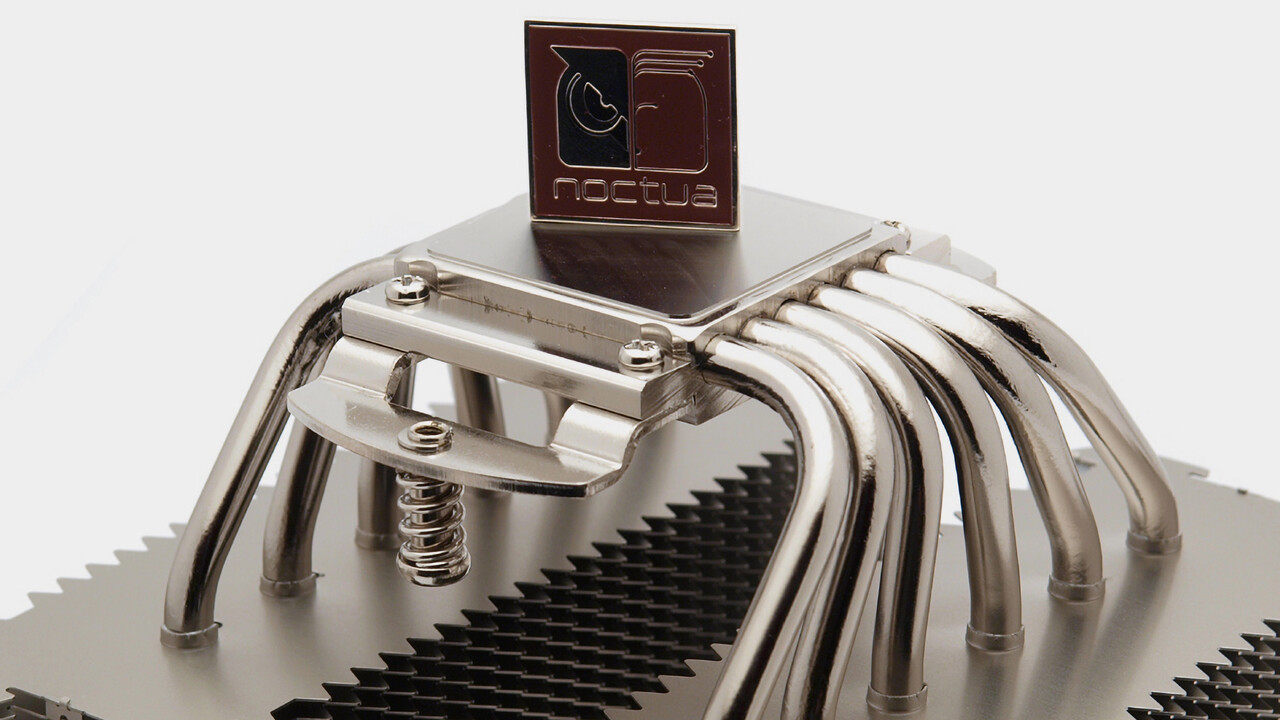In the test 15 years ago: Scythes Zipang 2 as a silent compatible top blow cooler 16 comments

With the Scythe Zipang 2 top blow cooler (test), the Japanese manufacturer attempted to break the dominance of popular tower coolers 15 years ago. A 140mm fan should ensure quiet operation and high performance.
140mm fan from above
The Scythe Zipang 2 was a top-blow format, so the fan was placed parallel to the motherboard above the heatsink itself. One of the advantages of this design was that not only the processor itself, but also the motherboard components located near the socket were cooled. The cooler consisted of 68 aluminum fins spaced 2mm apart, connected to the copper baseplate via six 6mm heat pipes. As on the Mugen, the slats were divided into several regions, which meant that the manufacturer hoped for better performance with slowly rotating fans.

Zipang 2 scope of delivery photo 1 of 7
The dimensions of the Zipang 2 were 145 × 149 × 106 mm (L × W × H) for a total weight of 580 grams excluding fan. This was a Scythe Kaze Maru which spun at a maximum speed of 1000rpm and was connected using a 3 pin plug. In terms of quality, the Zipang 2 made a good impression with a nickel-plated base plate, clean material assembly and a high degree of fit precision.
The installation of the Zipang 2 was different depending on the platform chosen. All current Intel and AMD platforms since sockets 478 and 754 were supported. Installing the cooler on the test system – an Intel Core i7-920 on Socket 1366 – was easy using the simple push-pin method.
Lower cooling performance than tower cooler competition
The Scythe Zipang 2 couldn’t get close to its opponents in a tower cooler design. Since most coolers used 120mm fans, Techconseil used different 120mm models as reference ventilation. Equipped with these fans, the Zipang 2 found itself at the end of the testing ground. As soon as the processor was overclocked to 3.4 GHz instead of the normal 2.66 GHz, the Zipang was only able to maintain a core temperature of just under 100°C in this scenario.
Equipped with the standard ventilation, the Zipang was able to perform well, especially in the lower speed range, and keep pace with the tower coolers. However, as with the reference fan, it was not suitable for cooling an overclocked CPU.
Conclusion
Overall, the Zipang 2 was a complete package equipped with quiet and very good benchmark ventilation. The finish was high quality and assembly was easy. For 40 euros, the Zipang 2 was a very good top-blowing cooler, but as expected, it couldn’t always compete with popular tower coolers in terms of performance.
In the category “In the test 15 years ago”, the editorial staff consults the test archives every Saturday since July 2017. We list the last 20 articles published in this series below:
ATis Radeon HD 5770 offered DirectX 11 from 140 eurosThe Radeon HD 5850 as an affordable entry-level DirectX 11ATis Radeon HD 5870 as the first graphics card with DirectX 11Intels Core i5-750, i7-860 and i7-870 on socket 1156Cooler Masters Hyper 212 Additionally as a cooler economicalIntels SSD The good sound from the Far EastThe NZXT Whisper was “too hot to handle”The Radeon HD 4890 Atomic from Sapphire was perfect Cooler Masters The HAF 922 was a HAF-Storm-Sniper hybrid Even Vapor-X couldn’t tame the Radeon HD 4890 The Razer Mamba because Nvidia’s Ion wireless gaming mouse gave the Intel Atom more than simple games WingThe expensive luxury netbook “EeePC S101” from Asus
Even more content like this and many other reports and anecdotes can be found in the retro corner of the Techoutil forum.

A cooling systems specialist, Sophie helps enthusiasts optimise their setups with watercooling.


